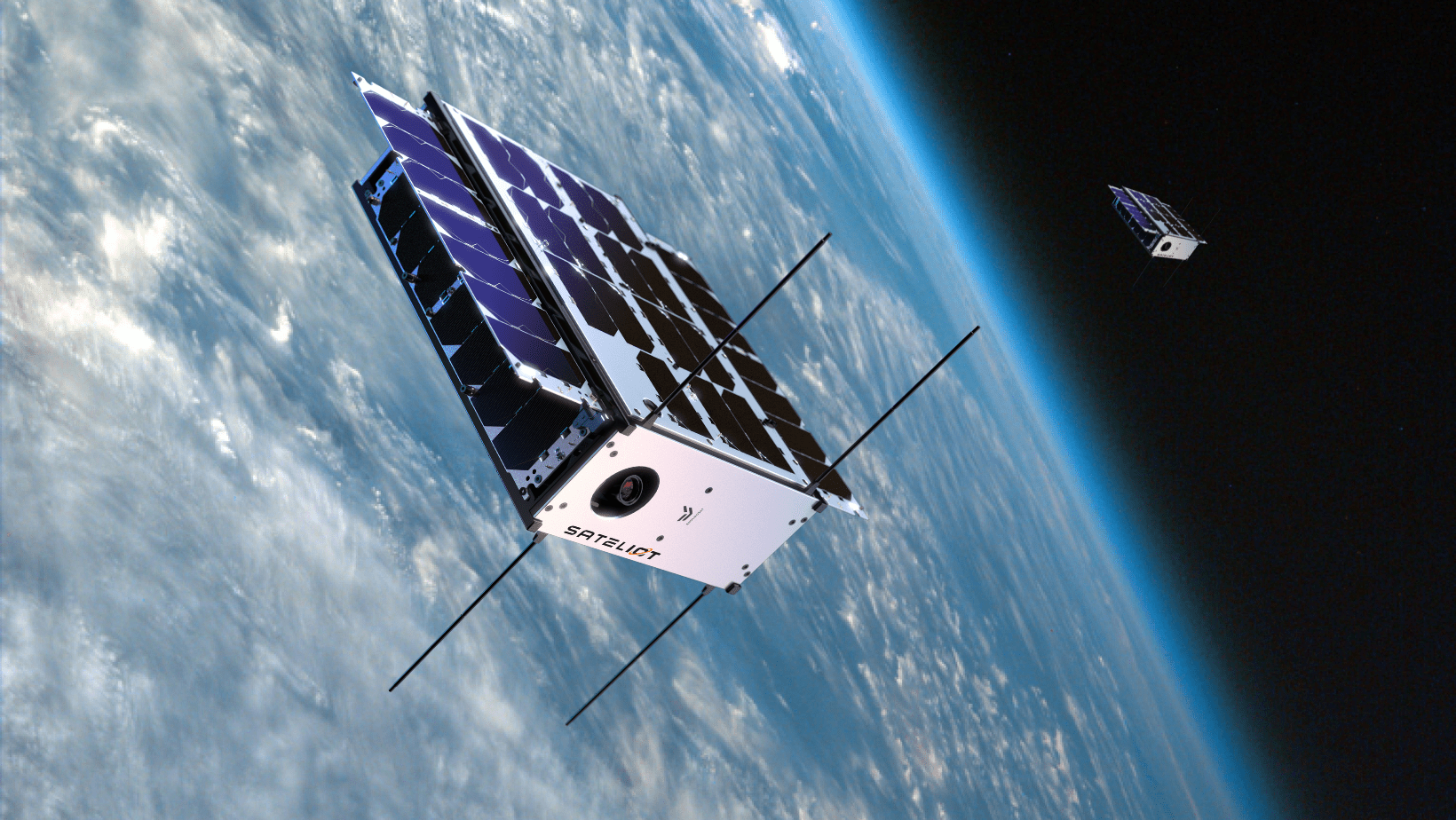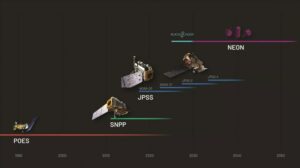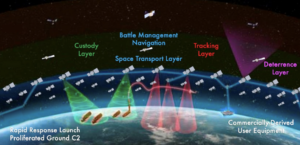
In the vast expanse of space, satellites orbit silently, serving as the connected backbone of our modern world. A fast-proliferating network of satellites forms the critical infrastructure that supports global communication, navigation, weather forecasting, defensive operations and more. Today’s global space economy is huge, forecasted to total more than $600 billion annually in 2024.
Internet of Things (IoT) components are integral to next-generation satellites. Designed to optimize efficiency and enhance functionality, IoT satellite devices and systems provide better communication, data transmission, onboard data processing, power management and more. But the interconnectedness of these space-based systems is also one of their primary vulnerabilities. Along with threats from old school signal jamming and interference from terrestrial locations, IoT components make modern spacecraft vulnerable to a new attack vector — other satellites within this massive and growing network.
Similar to how a flaw in one device can compromise an entire network in terrestrial IoT, a security breach in one satellite can have cascading effects on others to which it is connected. That opens doors for malicious actors to exploit weaknesses in satellite communication protocols, command systems or software, potentially causing disruptions or even total loss of control over these orbiting assets.
Challenges in securing satellites from IoT threats
The lack of standardized security protocols across diverse commercial, civil, and military satellite developers exacerbates this vulnerability, and many approaches to satellite cybersecurity come with their own challenges. For example, protecting satellites with onboard hardware-based security solutions is expensive, and the components are physically heavy and add costs to satellite launches and operations.
The physical nature and area of operations for satellites presents additional challenges. Unlike terrestrial devices, satellites deployed into orbit cannot be easily accessed for security updates or physical maintenance.
Additionally, due to the large increase in satellites operating closer to each other, phenomena such as Adjacent Satellite Interference (ASI), or signals from one satellite interfering with those of another due to frequency similarities, can and do occur. Such interference can lead to degraded signal quality, data corruption or complete disruption of communications. A terrestrial analogy would be experiencing interference on your car radio when two nearby radio stations broadcast on very close frequencies.
The United Nations Office for Outer Space Affairs facilitates agreements about space activities, including coordinating satellite orbits to avoid interference and conflicts among different space-faring nations. Satellite operators are also supposed to deconflict interference events through careful coordination of frequency band allocation to ensure that adjacent satellites operate on well-separated frequency ranges. In practice, since some satellite vendors are buying similar components, some ASI is almost inevitable. However, the number and duration of interference events during both uplink and downlink is rising, and not all of that can be attributed to alignment errors and equipment malfunctions.
The prospect of a satellite being targeted by other satellites as well as by terrestrial-based attacks is a disturbing reality. While historically satellites were at risk from ground-based cyberattacks and kinetic missile attacks, the emergence of cyber-based anti-satellite (ASAT) capabilities means cyber-attacks are no longer focused solely on de-orbiting or destroying satellites. Instead, cyber ASAT weapons exploit onboard IoT based systems and subsystems that are difficult to protect or secure, targeting a satellite’s battery or interfering with the deployment or alignment of solar panels to degrade satellite performance or lifespan.
ASAT attack vectors have the potential to disrupt, degrade, disable or destroy satellites, causing widespread chaos and severely impacting vital services that rely on them. Non-kinetic cyber attacks could be embedded within critical IoT sub-systems at launch, or injected from neighboring satellites or enemy ground stations post-launch. They can also be masked to give adversaries plausible deniability: attacks could be attributed to ASI or timed alongside meteor showers, for example.
Immediate steps to address the threat
Because the threats to satellites are diverse and complex, addressing IoT vulnerabilities requires a multifaceted approach. First and foremost, collaboration among satellite operators, governments and international organizations is crucial to establishing unified security standards and protocols. Implementing robust encryption, authentication mechanisms, and regular security audits is imperative to fortify satellite systems against potential attacks. A consortium approach, perhaps involving nonprofit space advocacy groups, to set minimum security standards for vetting suppliers of IoT-enabled components could be very helpful in raising awareness and creating a mechanism to encourage information sharing among commercial companies.
Additionally, advancements in artificial intelligence and machine learning should be approached as both a benefit to bolster satellite security and a potential tool that will escalate the threat. AI-powered systems can continuously monitor satellite networks, detect anomalies and respond in real-time to potential threats, mitigating risks and minimizing the impact of attacks or embedded malware at launch. But conversely, AI powered cyber-threats will certainly exacerbate any IoT vulnerabilities that exist in space assets.
Nations that operate spacecraft and space launch facilities also need to establish norms and agreements governing responsible behavior in space. Diplomatic efforts aimed at preventing the militarization of space and mitigating the risks posed by ASAT capabilities are vital to maintaining the stability and safety of satellite operations.
In December 2021, deputy director of the Russian foreign ministry’s Department for Non-Proliferation and Arms Konstantin Vorontsov told a United Nations committee meeting that Starlink, although a commercial system providing internet services, “might no longer be considered purely civilian” and would be considered a military target. Under that doctrine, when Ukraine uses Starlink for military command and control, or leverages commercial imagery from BlackSky Global, the Russians would consider those platforms fair game for attack.
Protecting IoT in the final frontier
The days when a kinetic ASAT issue was the primary means of interfering with space operations have long since passed — there are too many satellites in orbit, and replacing new generation low-Earth orbit assets takes months not years. Consequently, it is now more cost effective for adversaries to launch attacks from space.
As U.S. commercial and government reliance on satellites continues to grow, safeguarding IoT assets from attacks originating from other satellites becomes paramount. The collaborative effort of governments, space agencies and private entities must prioritize the development and implementation of robust security measures and trusted hardware manufacturing to ensure the continued reliability and functionality of these indispensable space-based systems.
Satellites remain a pinnacle of technological achievement, but we now stand at a crossroads where space is no longer an uncontested battleground. The threat of IoT attacks from other satellites serves as a stark reminder of the delicate balance between technological advancement and security, even in the vast expanse of the cosmos. As we navigate this evolving landscape, fortifying the defenses of our satellite infrastructure becomes an imperative mission to safeguard our connected world.
Paul Maguire is the CEO and Co-founder of Knowmadics, an innovative solutions provider addressing critical security requirements for both terrestrial and space-based assets. He is a former Naval Intelligence Officer specializing in Space Collections, and civilian Program Manager for the Air Force Space and Reconnaissance Office involved with the design of future National space systems. Mr. Maguire has also co-authored papers on Multi-Spectral Imagery (MSI) and Imagery Exploitation.
- SEO Powered Content & PR Distribution. Get Amplified Today.
- PlatoData.Network Vertical Generative Ai. Empower Yourself. Access Here.
- PlatoAiStream. Web3 Intelligence. Knowledge Amplified. Access Here.
- PlatoESG. Carbon, CleanTech, Energy, Environment, Solar, Waste Management. Access Here.
- PlatoHealth. Biotech and Clinical Trials Intelligence. Access Here.
- Source: https://spacenews.com/satellites-specter-iot-attacks/
- :has
- :is
- :not
- :where
- 2021
- 2024
- a
- About
- accessed
- achievement
- across
- activities
- actors
- add
- Additional
- address
- addressing
- adjacent
- advancement
- advancements
- advocacy
- Affairs
- against
- agencies
- agreements
- AI
- AI-powered
- aimed
- AIR
- Air Force
- alignment
- All
- allocation
- almost
- along
- alongside
- also
- Although
- among
- an
- and
- Annually
- Another
- any
- approach
- approaches
- ARE
- AREA
- arms
- artificial
- artificial intelligence
- Artificial Intelligence and Machine Learning
- AS
- Assets
- At
- attack
- Attacks
- audits
- Authentication
- avoid
- awareness
- Backbone
- Balance
- BAND
- based
- battery
- battleground
- BE
- becomes
- behavior
- being
- benefit
- Better
- between
- Bloomberg
- bolster
- both
- breach
- broadcast
- but
- Buying
- by
- CAN
- cannot
- capabilities
- car
- careful
- causing
- ceo
- certainly
- challenges
- Chaos
- civil
- Close
- closer
- Co-founder
- collaboration
- collaborative
- collections
- come
- commercial
- committee
- Communication
- Communications
- Companies
- complete
- complex
- components
- compromise
- conflicts
- connected
- Consequently
- Consider
- considered
- consortium
- continued
- continues
- continuously
- control
- conversely
- coordinating
- coordination
- Corruption
- Cosmos
- Cost
- Costs
- could
- Creating
- critical
- Critical Infrastructure
- Crossroads
- crucial
- cyber
- Cyber Attacks
- cyberattacks
- Cybersecurity
- data
- data processing
- Days
- December
- december 2021
- defensive
- Department
- deployed
- deployment
- deputy
- Design
- designed
- destroy
- detect
- developers
- Development
- device
- Devices
- different
- difficult
- Director
- Disrupt
- Disruption
- disruptions
- diverse
- do
- doors
- due
- duration
- during
- each
- easily
- economy
- Effective
- effects
- efficiency
- effort
- efforts
- embedded
- emergence
- encourage
- encryption
- enhance
- ensure
- Entire
- entities
- equipment
- Errors
- escalate
- establish
- establishing
- Even
- events
- evolving
- exacerbate
- example
- exist
- expensive
- experiencing
- Exploit
- exploitation
- facilitates
- facilities
- fair
- final
- First
- flaw
- focused
- For
- Force
- foreign
- foremost
- Former
- forms
- fortify
- Frequency
- from
- functionality
- future
- game
- generation
- Give
- Global
- governing
- Government
- Governments
- Ground
- Group’s
- Grow
- Growing
- Hardware
- Have
- he
- heavy
- helpful
- historically
- How
- However
- HTTPS
- huge
- IEEE
- Impact
- impacting
- imperative
- implementation
- implementing
- in
- Including
- Increase
- inevitable
- information
- Infrastructure
- innovative
- instead
- integral
- Intelligence
- interconnectedness
- interference
- interfering
- International
- Internet
- into
- involved
- involving
- iot
- issue
- IT
- Lack
- landscape
- large
- launch
- launches
- lead
- learning
- leverages
- lifespan
- locations
- Long
- longer
- loss
- machine
- machine learning
- maintaining
- maintenance
- make
- malfunctions
- malicious
- malware
- management
- manager
- manufacturing
- many
- massive
- means
- measures
- mechanism
- mechanisms
- meeting
- Military
- minimizing
- minimum
- Mission
- mitigating
- mitigating risks
- Modern
- Monitor
- months
- more
- mr
- msi
- multifaceted
- must
- National
- Nations
- Nature
- Navigate
- Navigation
- Need
- neighboring
- network
- networks
- New
- next-generation
- no
- Nonprofit
- norms
- now
- number
- occur
- of
- Office
- Officer
- Old
- on
- Onboard
- ONE
- opens
- operate
- operating
- Operations
- operators
- Optimize
- or
- Orbit
- orbiting
- organizations
- originating
- Other
- Others
- our
- outer space
- over
- own
- panels
- papers
- Paramount
- passed
- performance
- perhaps
- physical
- Physically
- pinnacle
- Platforms
- plato
- Plato Data Intelligence
- PlatoData
- plausible
- posed
- post-launch
- potential
- potentially
- power
- powered
- practice
- presents
- preventing
- primary
- Prioritize
- private
- processing
- Program
- prospect
- protect
- protecting
- protocols
- provide
- provider
- providing
- purely
- quality
- Radio
- radio stations
- raising
- ranges
- real-time
- Reality
- regular
- reliability
- reliance
- rely
- remain
- reminder
- Requirements
- requires
- Respond
- responsible
- rising
- Risk
- risks
- robust
- russian
- Russians
- s
- safeguarding
- Safety
- satellite
- satellites
- School
- secure
- securing
- security
- Security audits
- Security Measures
- security updates
- serves
- Services
- serving
- set
- severely
- sharing
- should
- Signal
- signals
- similar
- similarities
- since
- Software
- solar
- solar panels
- solely
- Solutions
- some
- Space
- space-based
- spacecraft
- specializing
- specter
- Stability
- stand
- standardized
- standards
- stark
- starlink
- Stations
- Steps
- such
- suppliers
- Supports
- supposed
- system
- Systems
- takes
- Target
- targeted
- targeting
- technological
- terrestrial
- that
- The
- their
- Them
- There.
- These
- they
- things
- this
- those
- threat
- threats
- Through
- Timed
- to
- today’s
- told
- too
- tool
- Total
- trusted
- two
- u.s.
- Ukraine
- under
- unified
- United
- united nations
- unlike
- Updates
- uses
- Vast
- vendors
- very
- vital
- Vulnerabilities
- vulnerability
- Vulnerable
- was
- we
- weaknesses
- Weapons
- Weather
- WELL
- were
- when
- which
- while
- widespread
- will
- with
- within
- world
- would
- years
- Your
- zephyrnet





